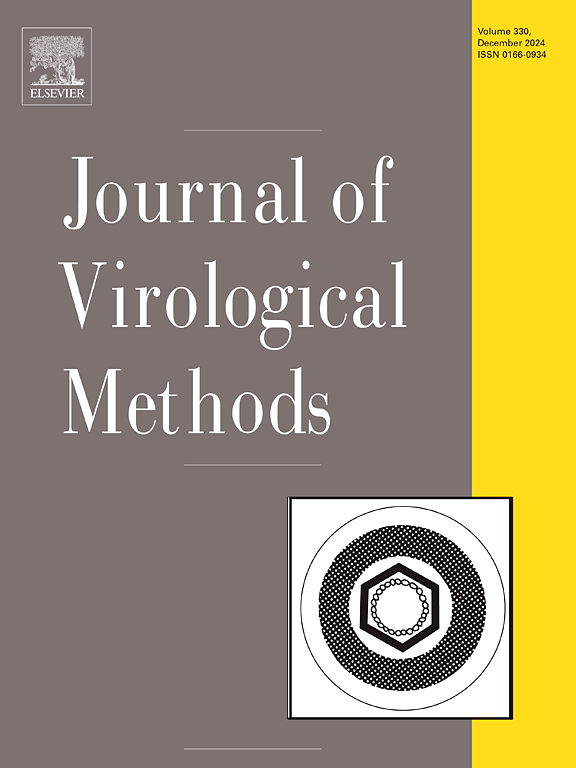Genotypic analysis of rhinovirus and human respiratory syncytial virus in sudden unexpected death in infancy cases at Tygerberg Hospital, Cape Town, South Africa
IF 1.6
4区 医学
Q3 BIOCHEMICAL RESEARCH METHODS
引用次数: 0
Abstract
Infant mortality remains a major global concern. Sudden unexpected death in infancy (SUDI) is reported globally and an infant mortality rate of 23.129 per 1 000 live births has been reported in the Western Cape, South Africa, in 2024. Infections are often confirmed in SUDI cases admitted to the Tygerberg Medico-legal Mortuary in Cape Town, but molecular diversity in respiratory viruses is underreported. A total of 162 previously confirmed polymerase chain reaction (PCR)-positive trachea and / or lung samples from SUDI cases collected between 2015 and 2019 were retested for either rhinovirus or human respiratory syncytial virus (RSV). Sixty-four samples were positive for rhinovirus and 15 for RSV. Results from 5 of all positive samples were outside the PCR assay amplification limits determined by the cycle threshold (Ct) value and were excluded. Another 4 samples did not amplify, and the remaining 70 underwent subsequent sequencing, but successful sequences could only be obtained in 53 samples. All three rhinovirus (A, B and C) genotypes were identified, with RV-A most prevalent, followed by RV-C and RV-B. RSV-A and RSV-B were detected equally, and after amino acid alignment, 20 amino acid duplication and nine substitutions were found that confirmed two RSV-BA9 genotypes. This study describes the molecular and phylogenetic characterisation of specific respiratory viruses in SUDI cases in South Africa. However, the rapid decline in viral viability in post-mortem samples does not allow correlation between viral genotypes and cause of death or disease severity. Future prospective studies should therefore investigate temporality and associations between specific viral strains and clinical disease severity and mortality.
南非开普敦Tygerberg医院婴儿猝死病例鼻病毒和人呼吸道合胞病毒的基因型分析
婴儿死亡率仍然是全球关注的一个主要问题。全球都有婴儿猝死的报告,2024年南非西开普省报告的婴儿死亡率为每1 000例活产23.129例。在开普敦的Tygerberg法医太平间收治的SUDI病例中,感染经常得到证实,但呼吸道病毒的分子多样性被低估了。从2015年至2019年期间收集的SUDI病例中,共对162例先前确认的聚合酶链反应(PCR)阳性的气管和/或肺部样本进行了鼻病毒或人呼吸道合胞病毒(RSV)的重新检测。鼻病毒阳性64份,呼吸道合胞病毒阳性15份。所有阳性样本中有5份的结果超出了周期阈值(Ct)确定的PCR扩增限度,并被排除。另有4个样本没有扩增,其余70个样本进行了后续测序,但只有53个样本获得了成功的序列。确定了所有三种鼻病毒(A、B和C)基因型,其中RV-A最为普遍,其次是RV-C和RV-B。RSV-A和RSV-B基因型相同,经氨基酸比对,发现20个氨基酸重复和9个替换,证实了RSV-BA9基因型。本研究描述了南非SUDI病例中特定呼吸道病毒的分子和系统发育特征。然而,死后样本中病毒活力的迅速下降不允许病毒基因型与死亡原因或疾病严重程度之间存在相关性。因此,未来的前瞻性研究应调查特定病毒株与临床疾病严重程度和死亡率之间的时间性和相关性。
本文章由计算机程序翻译,如有差异,请以英文原文为准。
求助全文
约1分钟内获得全文
求助全文
来源期刊
CiteScore
5.80
自引率
0.00%
发文量
209
审稿时长
41 days
期刊介绍:
The Journal of Virological Methods focuses on original, high quality research papers that describe novel and comprehensively tested methods which enhance human, animal, plant, bacterial or environmental virology and prions research and discovery.
The methods may include, but not limited to, the study of:
Viral components and morphology-
Virus isolation, propagation and development of viral vectors-
Viral pathogenesis, oncogenesis, vaccines and antivirals-
Virus replication, host-pathogen interactions and responses-
Virus transmission, prevention, control and treatment-
Viral metagenomics and virome-
Virus ecology, adaption and evolution-
Applied virology such as nanotechnology-
Viral diagnosis with novelty and comprehensive evaluation.
We seek articles, systematic reviews, meta-analyses and laboratory protocols that include comprehensive technical details with statistical confirmations that provide validations against current best practice, international standards or quality assurance programs and which advance knowledge in virology leading to improved medical, veterinary or agricultural practices and management.

 求助内容:
求助内容: 应助结果提醒方式:
应助结果提醒方式:


